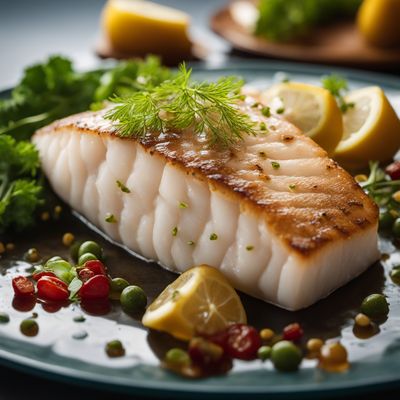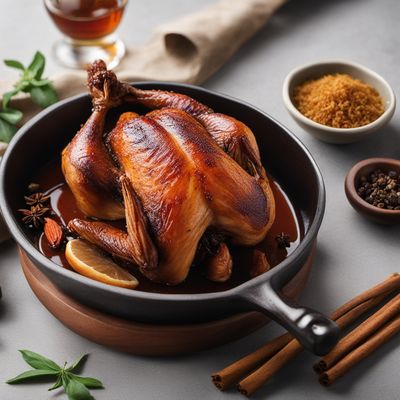
Ingredient
Halibut, pacific
The Oceanic Delicacy
Pacific halibut is a large, flatfish with a diamond-shaped body and a pale, off-white color. It has a firm, yet tender texture and a mild, sweet flavor. The meat is lean and delicate, making it versatile for various cooking methods, such as grilling, baking, or pan-searing. Pacific halibut is highly sought after for its culinary appeal and is considered a delicacy in many coastal regions.
Origins and history
Pacific halibut is native to the North Pacific Ocean, ranging from Alaska to California. It has been an important food source for indigenous communities in these regions for centuries. Commercial fishing for Pacific halibut began in the late 19th century, and it has since become a popular seafood choice worldwide. Sustainable fishing practices are now in place to protect the population of this prized fish.
Nutritional information
Pacific halibut is a good source of high-quality protein and contains essential nutrients such as omega-3 fatty acids, vitamin D, and selenium. It is also relatively low in calories and fat compared to other types of fish.
Allergens
Pacific halibut may cause allergic reactions in individuals with fish allergies.
How to select
When selecting Pacific halibut, look for fillets or steaks that are firm, moist, and have a fresh, mild aroma. The flesh should be translucent and free from any discoloration or browning. Avoid fish with a strong fishy odor or signs of dryness. If purchasing a whole fish, the eyes should be clear and bright, and the skin should be intact and shiny.
Storage recommendations
To maintain the freshness and quality of Pacific halibut, it is best to store it in the refrigerator. Wrap the fish tightly in plastic wrap or place it in an airtight container to prevent exposure to air and moisture. Use the fish within 1-2 days of purchase for optimal flavor and texture.
How to produce
Pacific halibut is primarily caught through commercial fishing methods. It requires specialized equipment and knowledge to catch this fish, making it challenging for amateurs to produce on their own.
Preparation tips
Pacific halibut can be prepared in various ways, including grilling, baking, broiling, or pan-searing. It pairs well with a variety of flavors and ingredients, such as citrus, herbs, garlic, and butter. When cooking, be careful not to overcook the fish, as it can become dry. Aim for a slightly translucent center that flakes easily with a fork. Pacific halibut is commonly used in dishes like fish tacos, fish and chips, or simply served with a squeeze of lemon and a sprinkle of salt and pepper.
Substitutions
Cod, sole, or flounder can be used as substitutes for Pacific halibut, as they have similar mild flavors and textures. However, keep in mind that the taste and texture may vary slightly.
Culinary uses
Pacific halibut is a versatile fish that can be used in a wide range of culinary applications. It is commonly used in dishes such as fish tacos, fish and chips, ceviche, or as the main protein in seafood stews or chowders.
Availability
Pacific halibut is commonly available in North America, particularly in coastal regions from Alaska to California. It is also exported to other countries, making it accessible in various parts of the world.



